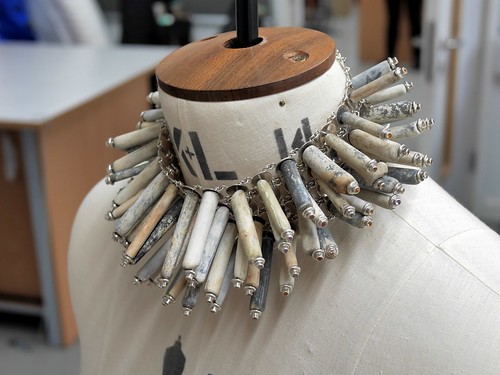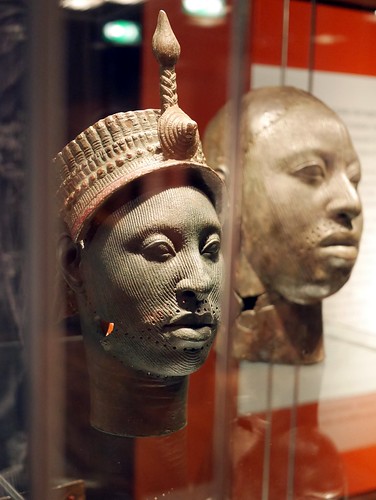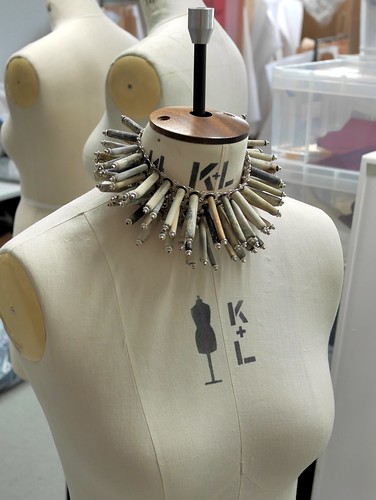The collar is more-or-less completed. I have to give it a final polish:
One of the things I really like about this collar is the way it moves:
The idea for making a collar like this came from the same day as we went mudlarking on the Thames and afterwards visited the Docklands Museum, which I have to say is really exceptionally dull. I was, however, absolutely entranced by these Ife heads:
These are normally in the British Museum and there is an exceptional Radio 4 programme about them which I recommend listening to. I wasn't quite sure where to go with the idea but on researching the heads, found that they were probably made some time in the 15th Century and that when they were discovered in 1910, they overturned previous thinking about Africa and African art, undermining the received thought about dionysian "bon sauvage" view of the continent. I wanted to capture some of this tension in my piece and tried a new way of working through the ideas, drawing directly on the images:
These are drawn directly on the photocopies in correction-fluid and ink. The image on the left is the one I finally chose to work with, interpreting the rough porcelain pipe stems (savage) in the sophisticated form of a gem-set ruff.
Tomorrow I have a real treat in store! I'm off to see a new 35mm print of Béla Tarr's "Sátántangó". I first saw this film on a really terrible VHS transfer which had then be digitised; two years ago, Tarr released a DVD copy of the film, which I bought and watched but never really imagined that I would have the chance to see it in the cinema.
It is hard to explain what appeals about Tarr's films: they are usually very long - "Sátántangó" is just under eight hours long - and very static. They are studies in nothing happening, but nothing happens so poetically in his films that they are utterly beautiful and compelling.
Here is the trailer, in case you are interested...





